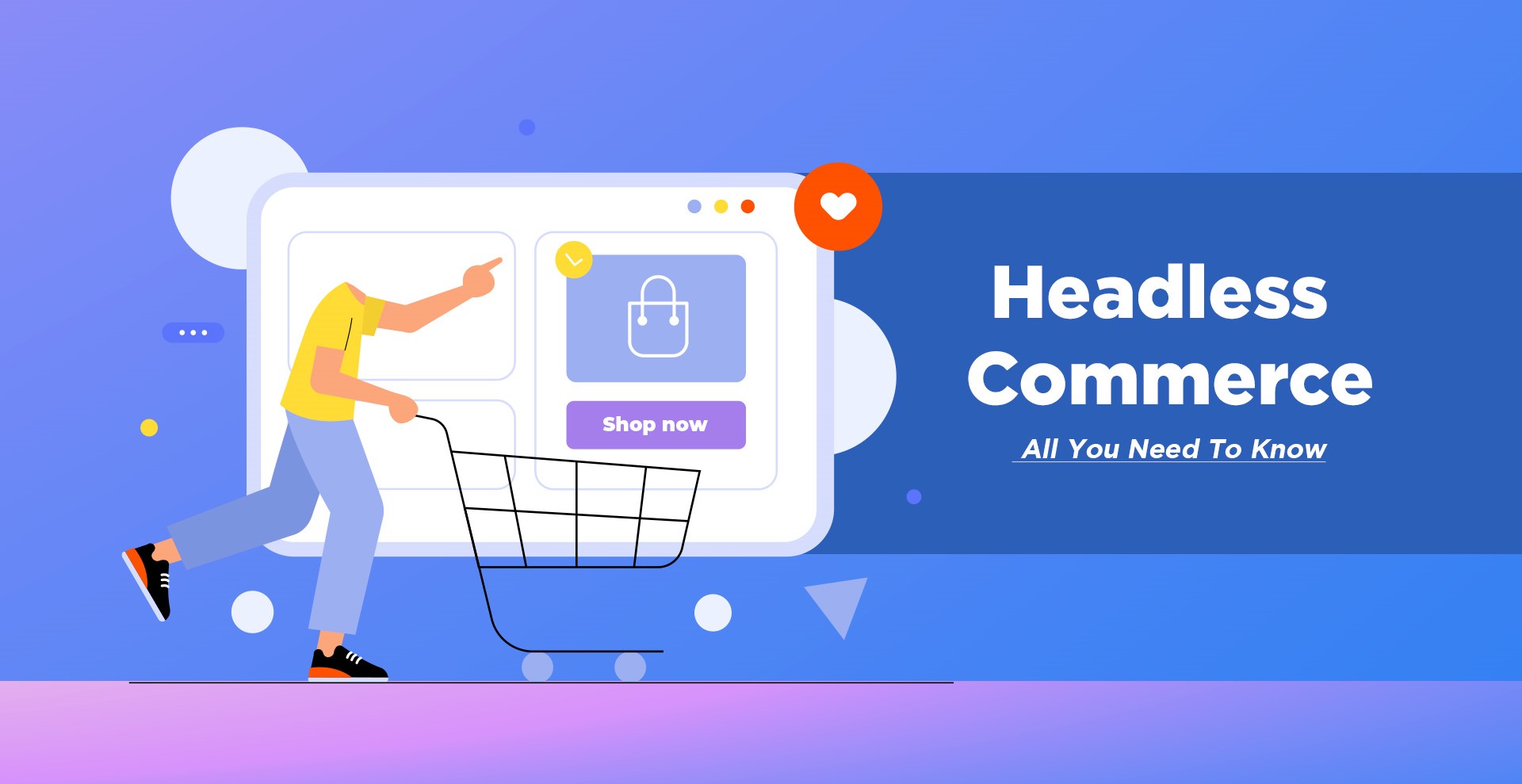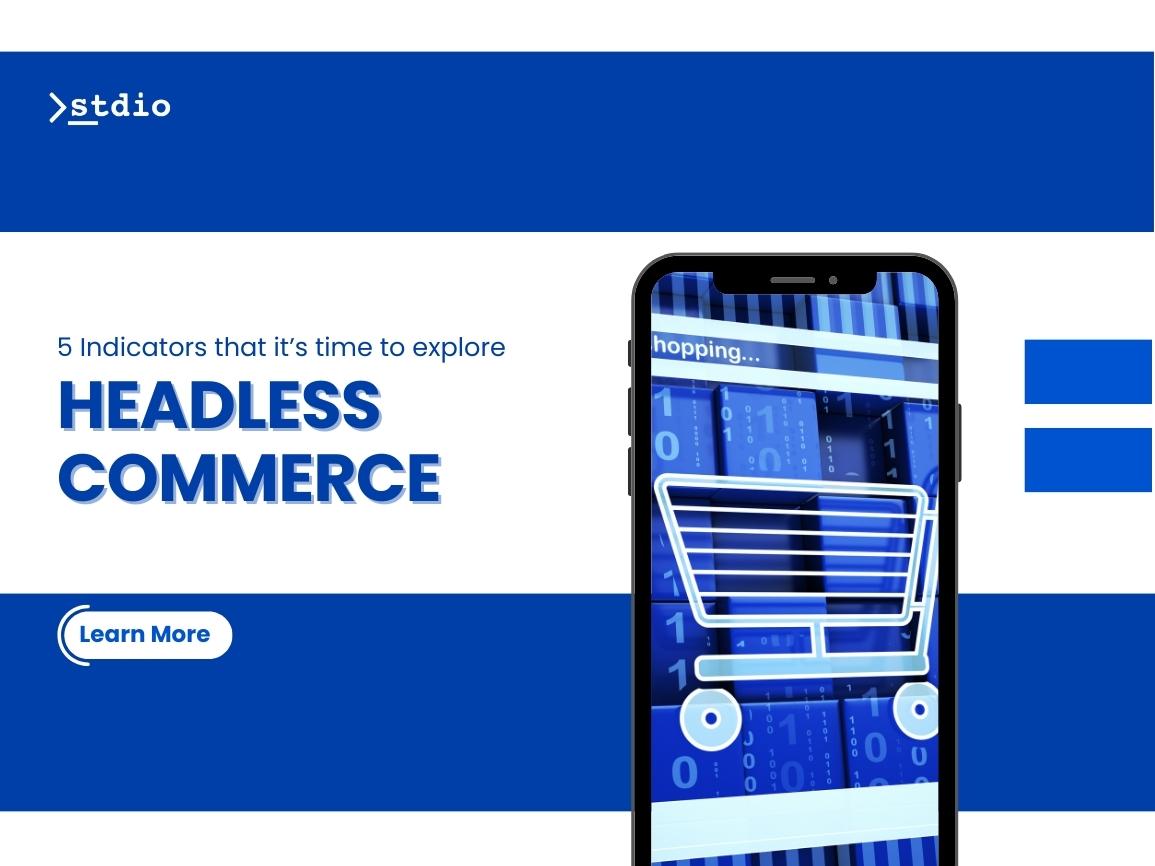Unlock new opportunities for your brand with headless commerce! Discover the top signs that your business might be ready for a shift to a headless commerce solution. Don’t let your current commerce platform limit your growth. Read this insightful article now.
As an online retailer, your focus lies in delivering the right message to your audience. This is crucial for building trust and credibility in the competitive eCommerce industry. However, it’s important to pay attention to the signs your website is giving you. Is it time to embrace a modern and flexible headless software architecture instead of being stuck with an outdated and inflexible monolithic system? Think about low conversion rates or an outdated design that leads to higher cart abandonment rates. The question is, are you listening?
So, what exactly is a Headless Software Architecture?
In plain terms, headless commerce software architecture refers to the division of your storefront and the system functionalities of your website. The “head” in headless represents the front end or the website interface that users interact with. This is distinct from the back end, which encompasses the infrastructure and functionalities that ensure the website operates effectively. By adopting a headless approach, you can enhance the overall performance and flexibility of your online platform.
When is the right time to embrace Headless Commerce?
Your website architecture is indicating a clear need for a necessary makeover and a shift towards a headless commerce solution. Let’s explore the five major issues or signs that signify it’s time to embrace headless commerce.
Dealing with an Overwhelming Tech Debt Situation
Technical debt, or tech debt, occurs when speedy delivery takes precedence over code perfection. As an eCommerce business, you likely started with a basic site on platforms like WooCommerce or Shopify. You installed apps for extra functionalities and made updates to themes and functions along the way.
Now, you may face issues with functionality or slow performance. Your marketing department may request new features, but refactoring the messy codebase would only increase technical debt.
Transitioning to a platform approach offers several benefits. It allows easy implementation of new features without compromising code integrity. It also provides flexibility in designing the frontend as you envision it.
When your website’s loading speed is too slow
Let’s focus on a crucial element: site speed. Optimizing your website’s speed is essential because it directly impacts your conversions. Studies show that every additional second it takes for your page to load results in an average conversion drop of 4.42%. So, if your page takes more than five seconds to load, you’ll experience a significant loss in conversions.
Now, how can headless commerce solve this problem? Headless commerce addresses the challenges mentioned earlier, such as site speed and customer experiences. By dividing your software architecture into two parts, the functionalities and capabilities of your website are separate from its aesthetics. This separation allows for faster loading times and, the best part, the ability to create personalized experiences.

When You’re Ready to Invest in Web Development
Opting for a headless approach to website building requires a significant capital investment. However, the cost becomes comparable to that of a headless commerce solution when considering the required level of customization for maintaining your existing eCommerce solution.
With a monolithic architecture, customizing the theme according to your business requirements is limited. You are restricted to selecting a pre-set theme and building your store around it. As your store grows, adding new features and plugins for customization becomes challenging, restricting your freedom to experiment.
In truth, a monolithic website severely limits flexibility and often results in a slower website and decreased conversions. On the other hand, a headless solution allows for componentized software, which may require a higher initial investment but leads to lower costs in the long run.
Putting the Focus on Personalized Experiences
Decoupling the front end from functions simplifies tailoring it for the digital market. 70% of customers, as per Salesforce, expect companies to understand their needs and deliver better experiences. Headless technology offers flexibility, adaptability, communication, and consistency.
Personalization requires adding features that maintain the main structure while customizing sub-content for individual customers. However, implementing this on a monolithic structure leads to technical debt, slower site speed, and impacts the customer experience. In contrast, the headless environment allows leveraging best-in-breed solutions, offering an exceptional website experience.
Enhance the Multichannel Experience
Mobile commerce has become increasingly popular, with more customers than ever using their mobile devices for shopping. According to Statista, mobile commerce accounted for a significant 65.7% of all global eCommerce retail. With such impressive numbers, it’s only logical to prioritize the development of a mobile-first website.
When it comes to enhancing the multi-channel customer experience, a headless architecture is the go-to solution for brands. It enables seamless integration of various channels and ensures consistent experiences, all without the need for managing separate tools and processes.
Ready to go Headless eCommerce?
If your website consistently presents the issues mentioned earlier, adopting a headless approach is the right solution for you. Similarly, if your business operations are becoming increasingly intricate and you aspire to compete in the market by delivering exceptional experiences, implementing a Headless Commerce architecture can pave the way for a more promising future for your business.
Get in touch with the seasoned professionals at STDIO ASIA to avail yourself of exceptional eCommerce website development services.



Leave a Reply